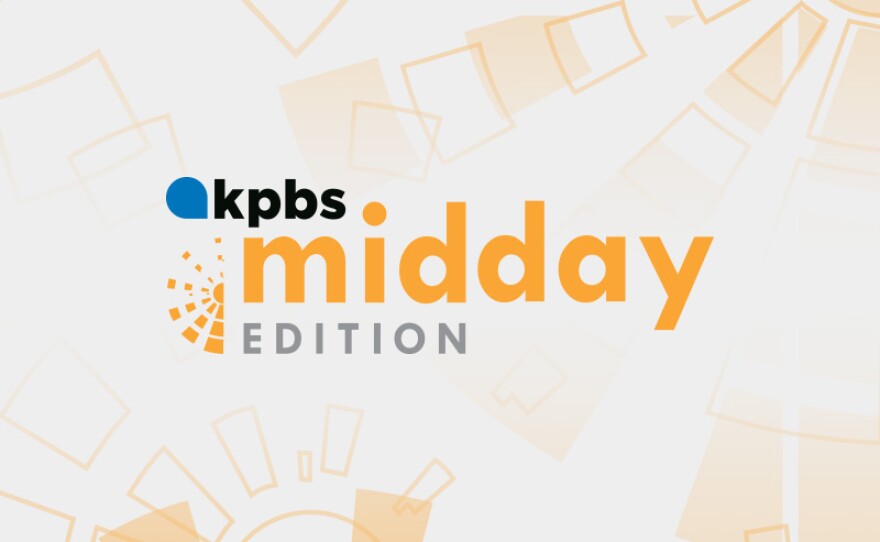Scorching Heat Wave Arrives In San Diego
Speaker 1: 00:00 San Diego is in for a heat wave this weekend and well into next week. And while hot weather in August is nothing new for the region. The COVID-19 pandemic complicates, and in some cases prohibits some of the usual way of San Diego get to beat the heat and triple digit. Inland temperatures also raised concerns about fire dangers, which is also complicated by COVID concerns. Johnny Mae is Alex tardy meteorologist with the national weather service. Alex, welcome back. Speaker 2: 00:31 Thank you for having me on one is Speaker 1: 00:33 Forecast for the next few days. How hot will it be? Speaker 2: 00:36 Yeah, so the forecast is for the heat we saw yesterday on Thursday to continue all the way through next week. And in fact, even higher temperatures, especially for our inland valleys for our mountains and our deserts. So one of the differences with this heat wave compared to some of the smaller heat waves we've seen so far this year is that our coastal areas are going to warm up, but also our inland areas are going to see extended heat. So possibly even seven days or a week of unusually warm temperatures, Speaker 1: 01:11 There are some fires burning up in Los Angeles County and notably the Lake fire burning up in Las Angeles national forest. Does that mean though that we won't be at critical risk for a fire? Yeah. Speaker 2: 01:25 Yeah. So that's a good question. We've already seen a lot of small fires even in San Diego County this summer, which is not unusual. Um, but what is unusual is this summer, we haven't seen any monsoon thunderstorm activity in our mountains. And the, what that does is it really makes things worse than they might normally be. So our fire threat is above average. So we have an elevated fire threat. And every time we see these heat waves like this, that go on and on, uh, it is common and this is what we expect over the next week or so that we will see some fires. So fire danger is elevated. It's not like what we see in the fall time, but it is elevated. And the fire you mentioned, uh, burned really hot and fast. We saw another one up in cherry Valley, uh, Riverside County that burned hot and fast Apple fire. So we need to be very careful and treat this in a situation that, uh, wildfires will spread quickly if they start now, usually Speaker 1: 02:26 During a hot weekend like this, we would see crowds of people at San Diego beaches, but that's not something public health officials are encouraging this time around. So how does the national weather service advise people to keep cool during hot weather? Speaker 2: 02:41 Yeah, so a lot of us take it for granted, but obviously air conditioning is our number one source. If you don't have air conditioning or don't have access to it throughout the day, or even during the nighttime, the County and the two, one, one information center provides centers. So we, we definitely advise those who don't have access to air conditioning, whether it be just for the peak of the day or at all to contact to one, one information center and see if there's a cooling center nearby. Normally you also could go to the mall, you could go to a restaurant, um, and those options just are not there because of the pandemic going on. So the next best thing, you know, would be like, you mentioned the beach. If you're able to get down to the beach, our water temperatures are still relatively cool in the upper sixties. So it is refreshing, but that's just a temporary relief. So cooling centers are really the main source, uh, for someone that really needs a break from the heat Speaker 1: 03:46 Working into the next few weeks, Alex, if you would, as summer comes to a close what's the long range forecast. Speaker 2: 03:53 Yeah. Unfortunately I don't have any good news in that regard. So, so far this year, our coastal communities, San Diego Carlsbad, Oceanside Del Mar have been spared by a lot of these heat waves. And it's, it's mainly been felt over inland areas, especially our deserts, like Braco Springs. Uh, they're seeing a really warm summer warmer than it should be, but our outlook indicates that this particular heat wave now and potentially more he waves in September are going to linger. And so once we get through this first heat wave, which will last, you know, through next week, it does look like on the horizon and in late August or perhaps in early September that we're going to have to deal with more heat waves and not just in the deserts, but also over our coastal areas and our Valley areas. So it looks like above normal temperatures might stick around for a while as we go into the late summer, early fall. Speaker 1: 04:53 Okay. So we're all gonna have to try to stay cool. Then I've been speaking with Alex tardy meteorologist for the national weather service. Alex, thank you so much. Speaker 2: 05:02 Yeah. Just try to stay as cool. Thank you. [inaudible].


